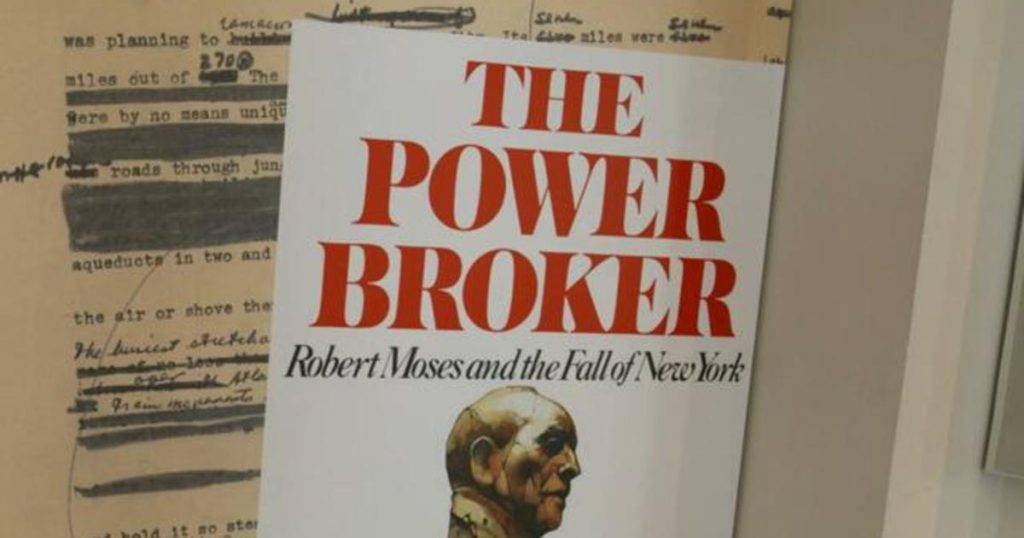In celebrating the 50th anniversary of Robert Caro’s seminal book “The Power Broker,” a new exhibit has been launched to mark the occasion. Published on September 16, 1974, the book delves into the life and career of city planner Robert Moses, who wielded immense power and influence over New York City for decades without ever being elected to public office. Caro’s work shed new light on Moses’ actions and their impact on the city, challenging the perception of him as a benevolent figure.
Robert Moses, known as the “master builder” of New York City, was a dominant force in shaping the cityscape through numerous infrastructure projects during the mid-20th century. His legacy was one of both admiration and controversy, as he was credited with transforming the city but also criticized for his authoritarian style and disregard for local communities. Caro’s extensive research and in-depth analysis in “The Power Broker” provided a critical examination of Moses’ reign and its consequences.
“The Power Broker” not only delved into Moses’ professional accomplishments, but also explored his personal life and motivations, offering a comprehensive portrait of the man behind the public persona. Caro’s meticulous attention to detail and thorough investigative work revealed the complex layers of Moses’ character, painting a nuanced picture of a figure who held immense power and authority over the urban landscape.
The new exhibit commemorating the 50th anniversary of “The Power Broker” showcases artifacts, photographs, and documents related to Robert Moses and the era he dominated. It provides a visual and immersive experience for visitors to delve deeper into the history and impact of Moses’ legacy, offering insights into his projects and their lasting effects on New York City. The exhibit serves as a tribute to Caro’s groundbreaking work and its enduring relevance in understanding urban planning and power dynamics.
Caro’s investigative journalism and storytelling in “The Power Broker” have received widespread acclaim for their depth, insight, and impact on the understanding of power and politics in urban development. The book remains a significant contribution to the study of city planning, governance, and history, serving as a touchstone for future generations of scholars and urban enthusiasts. The exhibit honoring its 50th anniversary serves as a testament to the enduring legacy of Caro’s work and the ongoing relevance of examining the intersection of power and public service.
As visitors explore the exhibit and reflect on Robert Moses’ legacy, they are invited to consider the complexities of power, influence, and accountability in urban governance. The narrative of Moses’ rise and fall offers valuable lessons for understanding the challenges and responsibilities of those in positions of authority, prompting a critical examination of leadership and decision-making in shaping the future of cities. The exhibit serves as a reminder of the enduring impact of individuals like Moses and the importance of transparency and public engagement in governance.


